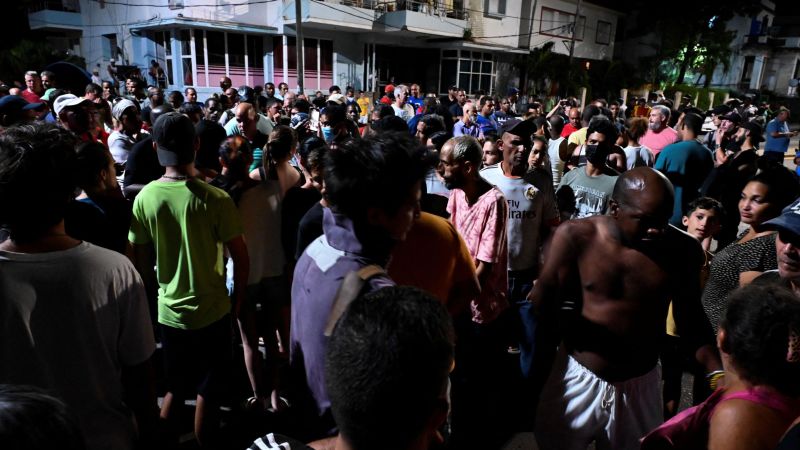
CNN
—
Protestors in Cuba who have been taking to the streets after Hurricane Ian damaged the island’s already faltering power grid could face criminal charges, Cuba’s Attorney General’s office said Saturday.
In a note published in the island’s communist party newspaper, Granma, prosecutors said they were investigating cases of arson and vandalism of state property, streets closures and “insults to officials and forces of order.”
Additionally, parents of minors who take part in the protests could face charges of child endangerment, according to the note.
Anti-government protests are usually quickly broken up by police in Cuba, but after Hurricane Ian worsened the island’s critical power shortages, Cubans across the island have taken to the streets to complain.
After forming in the Southern Caribbean Sea, Hurricane Ian made landfall late last month as a Category 3 hurricane in Cuba just southwest of La Coloma in the western Pinar del Rio province.
The hurricane’s fierce winds and rain left at least three people dead, state media said, and knocked out power to the entire island.
Two of the deaths occurred in Pinar del Rio, where a woman died after a wall collapsed on her and a man died after his roof fell on him, state media said.
The state-run National Electric System turned off power in Havana to avoid electrocutions, deaths and property damage until the weather improved. But the nationwide blackouts were caused by the storm and were not planned.
The storm exacerbated an economic crisis that has been gripping Cuba, leading to shortages of food, fuel and medicine. Blackouts across the island were regular all summer, which led to rare scattered protests against the government. Those protests picked up after the hurricane made life harder for Cubans already struggling.
Often at night, protestors in cities and towns have banged on pots and pans, angry at government power cuts. Some protestors have called for electrical service to be restored while others have demanded that Cuban leaders step down.
The recent protests have not reached the scale as those of July 2021, when thousands of Cubans took to the streets demanding change, in the largest anti-government demonstrations since the 1959 revolution.
After days of power cuts by the government last year, residents in the small city of San Antonio de los Baños ran out of patience. On July 11, 2021, they took to the streets in a moment of rare public dissent on the island.
Cubans across the nation were able to live stream and view in real time the unfolding protests in San Antonio de los Baños – and join in.
Almost immediately thousands of other Cubans were demonstrating. Some complained the lack of food and medicines, others denounced high-ranking officials and called for greater civil liberties. The unprecedented protests spread to small cities and towns.
While Cuban officials have long blamed US sanctions for the island’s woes, protestors during the summer of 2021 raged squarely against their own government for their worsening living conditions.
In a speech on state-run TV, Cuban President Miguel Diaz-Canel blamed the island’s economic problems on US sanctions, said the protests were the result of a subversion campaign directed from abroad and called on Cubans loyal to the revolution to take back the streets. The state cracked down.
Cuban prosecutors said this summer that close to 500 people were convicted and sentenced in connection with the protests, in the largest mass trials on the island in decades. Prison terms ranged between four and 30 years for crimes that included sedition.

